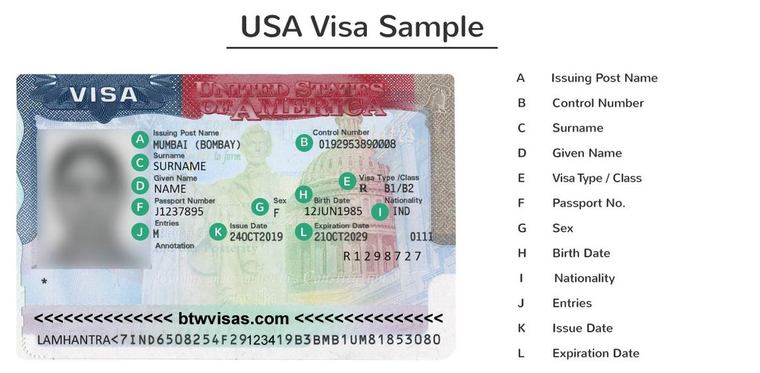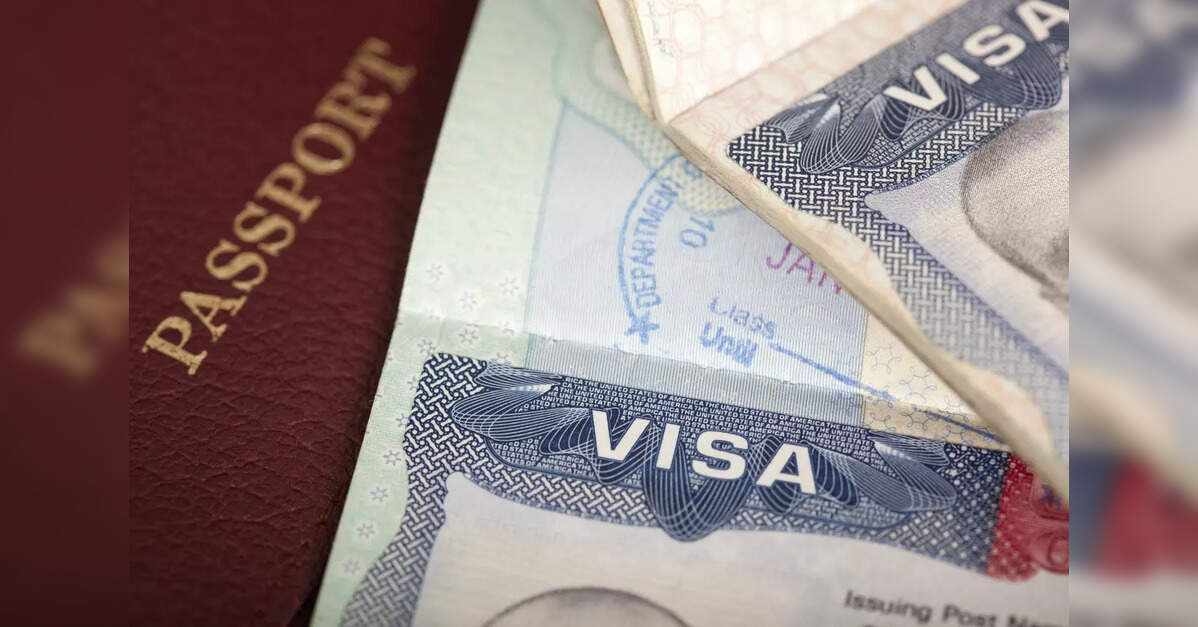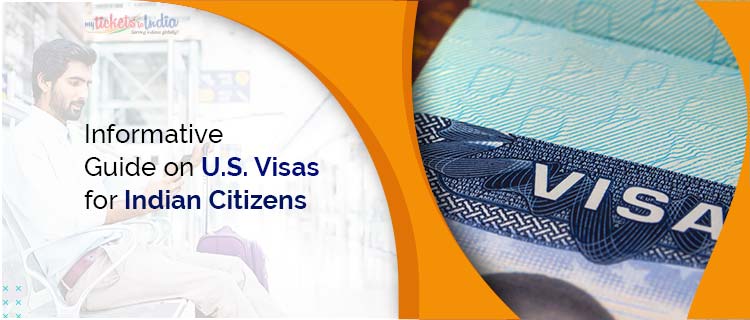Opening Opportunities: Vital Details on United States Visas for Indian People
Maneuvering the complexities of united state visa options is important for Indian residents intending to explore chances in the USA. With different classifications varying from momentary site visitor visas to pathways for permanent residency, comprehending the nuances of each can substantially affect one's trip. This discussion will highlight important details, including application treatments and eligibility requirements, that can encourage people in their pursuit of new experiences. As we unload these crucial facets, the question develops: what methods can one use to boost their opportunities of a successful application?
Summary of United States Visa Kind
When traversing the complex landscape people immigration, understanding the various sorts of visas offered is crucial for Indian citizens looking for entrance into the USA (US Visas For Indian Citizens). The United States migration system is largely categorized right into 2 wide classifications: immigrant visas and non-immigrant visas
Immigrant visas are assigned for those meaning to live permanently in the US. These include family-sponsored and employment-based visas, where candidates normally call for an enroller. Non-immigrant visas, on the various other hand, satisfy individuals seeking temporary residence, such as travelers, company visitors, and those traveling for certain objectives like job or research study.
Within the non-immigrant group, numerous visa types exist, including B-1/ B-2 for service and tourism, H-1B for specialty line of work, L-1 for intra-company transferees, and O-1 for people with phenomenal abilities. Each visa has distinct qualification requirements and application processes, necessitating complete research study to identify the appropriate category.
Understanding these categories is important for Indian people, as it enables them to navigate the application process better, guaranteeing they select the right visa type to meet their certain needs and goals. US Visas For Indian Citizens.
Pupil Visa Options
For Indian residents desiring research in the United States, pupil visas provide a crucial pathway to go after academic possibilities. The primary visa groups for trainees are the F-1 and M-1 visas.
The F-1 visa is marked for scholastic pupils enlisted in a permanent program at an approved organization, such as colleges and colleges. This visa enables trainees to take part in on-campus work and, under particular conditions, take part in optional practical training (OPT) after completing their level, supplying valuable work experience in their area of study.
Alternatively, the M-1 visa is meant for professional or non-academic programs. It caters to students seeking technical or occupation training, permitting them to enlist in non-degree programs. M-1 visa holders may join practical training, yet it is typically more restricted compared to the F-1 category.
To obtain a trainee visa, applicants should protect admission to an U.S. establishment, receive a Type I-20, and demonstrate financial capability to sustain their education and learning and living expenses. Comprehending these visa choices is significant for Indian citizens preparing to begin their academic trip in the USA.
Job Visa Categories
Lots of Indian citizens seeking employment possibility in the USA might consider various copyright groups tailored to different expert needs and qualifications. The most popular job visa is the H-1B visa, made for experienced workers in specialized line of work requiring a college level or its equal. It permits united state employers to temporarily employ foreign workers, with a cap on the variety of visas issued every year.
An additional vital group is the L-1 visa, which promotes the transfer of workers within international business. The L-1A visa is for managers and execs, while the L-1B visa is for staff members with specialized expertise.
The O-1 visa caters to individuals with extraordinary capacities in their area, consisting of scientific research, arts, or service. For agricultural or seasonal work, the H-2A and H-2B visas are available, permitting companies to employ foreign employees for short-lived settings.
Family-Based Immigration
Family-based immigration offers a pathway for united state residents and lawful long-term locals to reunite with their loved ones from India. This immigration category is basic for preserving familial bonds and facilitating the combination of member of the family right into American society. United state people can petition for prompt family members, including spouses, kids, and moms and dads, without facing yearly limits on visas. This expedited procedure significantly minimizes waiting times for these close household links.
On the other hand, lawful permanent residents might sponsor spouses and single kids, but they undergo annual caps, leading to longer wait times. The family-sponsored migration system is divided right into two major categories: instant family members and family members preference groups. The previous includes those that have a direct connection with a united state person, while the last incorporates more far-off relatives, such as brother or sisters and married youngsters of people, and kids of authorized permanent locals.
For Indian citizens looking for family-based migration, recognizing the subtleties of this system is essential. Appropriate documents and adherence to application procedures are crucial for effective sponsorship. By maneuvering through these intricacies, families can function towards reuniting and developing their lives together in the USA.
Long-term Residency Process
The procedure of getting long-term residency in the USA entails several vital visa groups customized for Indian people. Recognizing the application actions, including essential documents and qualification criteria, is essential for a successful result. Furthermore, potential applicants need to be aware of the anticipated timeline and details requirements related to each group.
Visa Categories Introduction
While going across the intricacies of the U.S. immigration system, Indian citizens seeking permanent residency must familiarize themselves with various visa groups customized to various scenarios. The primary pathway for permanent residency is through employment-based visas, which are categorized right into a number of choices, consisting of EB-1 for individuals with remarkable abilities, EB-2 for experts holding innovative levels, and EB-3 for knowledgeable employees. Each category has certain eligibility demands and processing times.

Variety visas, although limited in number, supply an opportunity for individuals from underrepresented nations to request long-term residency through a lottery game system. Additionally, altruistic options such as asylum and evacuee condition offer paths for those dealing with oppression.
Comprehending these visa groups is crucial for Indian get more info residents, as they considerably influence the strategy for acquiring permanent residency in the USA. Each classification's nuances and requirements require mindful consideration to straighten with individual conditions and objectives.
Application Process Steps
Steering the application procedure for irreversible residency in the United States includes a number of vital steps that have to be meticulously followed to assure an effective outcome. The journey usually starts with figuring out the suitable immigration classification, such as employment-based or family-sponsored visas. Applicants should collect necessary documentation, consisting of proof of eligibility, economic statements, and individual identification.
As soon as the group is recognized, the next action is to file the Type I-130 (Application for Alien Relative) or Type I-140 (Immigrant Application for Alien Worker), relying on the basis of the application. Following the approval of the request, applicants will certainly require to finish the National Visa Center (NVC) handling by submitting the called for fees and types.
Next, the candidate must undertake a medical checkup and acquire cops clearance certificates. Once these are completed, an interview will be arranged at the united state consular office or consular office. It is essential to prepare thoroughly for this interview, as it can substantially influence the choice on the application. Lastly, upon approval, the applicant will receive their permit, providing them irreversible residency in the USA.
Timeline and Requirements
Charting the timeline and requirements for getting permanent residency in the United States is important for Indian citizens seeking to establish a long-term presence. The process mainly hinges on employment-based or family-sponsored paths, each with certain prerequisites and timelines.
For employment-based migration, the process generally begins with a labor certification, which can take a number of months. Once approved, the company files a Kind I-140, Immigrant Application for Alien Employee, which can take an extra six months to a year, depending on the handling center. Following I-140 approval, candidates might need to await their concern date to come to be present, which can vary substantially based upon the applicant's group and country of origin.
For family-sponsored immigration, U.S. residents can petition for instant family members, which usually causes faster handling. However, other family groups may entail longer wait times because of annual caps.
Application Treatments
Recognizing the application procedures for United States visas is crucial for Indian citizens seeking entrance right into the United States. US Visa Categories India. This area will provide an overview of various visa groups and detail the step-by-step procedure for using. By following these guidelines, applicants can browse the complexities of the visa efficiently
Visa Categories Summary
Maneuvering the numerous visa categories offered to Indian residents can be a complex procedure, yet it is important for those looking for to travel, function, or research study in the USA. The U.S. visa system is categorized mostly into non-immigrant and immigrant visas, each offering unique functions.
Non-immigrant visas, such as B-1/ B-2 for service and tourist, F-1 for academic research, and H-1B for specialized employment, permit momentary keeps. Applicants must show their intent to return to India after their see.
On the other hand, immigrant visas, consisting of family-sponsored and employment-based categories, supply a path to long-term residency. These visas often need sponsorship from a loved one or company in the U.S., together with a strenuous application procedure.

Step-by-Step Refine
Usually, the application process for U.S. visas includes a number of critical steps that applicants need to diligently comply with to guarantee a smooth experience. The very first step is to figure out the ideal visa classification based upon the objective of travel, such as work, research study, or tourism. When the classification is recognized, candidates must complete the on the internet DS-160 form, offering precise individual information and traveling details.
After submitting the DS-160, candidates should pay the visa cost, which differs by visa type. Next, schedule an appointment for a visa meeting at the local united state Embassy or Consulate. Types Of US Visas. It is vital to get ready for the interview by gathering called for papers, including a legitimate ticket, visa confirmation, fee payment invoice, and any kind of supporting paperwork particular to the visa category
On the day of the interview, show up promptly and gown appropriately. During the meeting, be prepared to address inquiries regarding your travel purposes, economic security, and ties to India. If accepted, the visa will be stamped in the key, enabling for traveling to the United States. Following these actions ensures a well-organized and reliable copyright process for Indian people.
Tips for an Effective Application

Ensure that all types are finished accurately and honestly. Little errors or omissions can bring about delays and even rejections. It is suggested to collect all necessary sustaining papers, including monetary statements, employment letters, and evidence of ties to India, which show your intent to return post-visit.
Prepare for your visa meeting by exercising feedbacks to common inquiries associated with your itinerary and background - US Visa Categories India. Confidence and clarity can considerably impact the officer's impact. Ultimately, think about seeking help from reliable migration experts if you feel overwhelmed
Often Asked Questions
What Are the Handling Times for US Visa Applications?
Handling times for united state visa can vary significantly based upon the visa kind, application volume, and the candidate's place - US Visas For Indian Citizens. Generally, applicants must expect a handling duration varying from a few weeks to numerous months
Can I Modification My Visa Condition While in the United States?
Yes, people can transform their visa status while in the USA, offered they meet eligibility requirements and follow proper procedures. It is critical to file the appropriate application with united state Citizenship and Immigration Services (USCIS)
Are There Age Boundary for US Visa Candidates?
There are generally no specific age limits for U.S. visa applicants; however, particular visa categories may have age-related qualification criteria. It is very important to assess the requirements for each and every visa kind to guarantee conformity.
What Prevail Factors copyright Denial?
Common reasons copyright denial include not enough funds, failing to demonstrate ties to the home country, incomplete application forms, lack of appropriate documentation, previous migration violations, and failure to meet qualification criteria for the specific visa category.
Exactly How Can I Appeal a Visa Rejection Decision?
To appeal a visa rejection, assess the consular policeman's reasons, collect sustaining documents, and submit an official attract the ideal authority, making certain to follow specified timelines and step-by-step needs for the allure process.